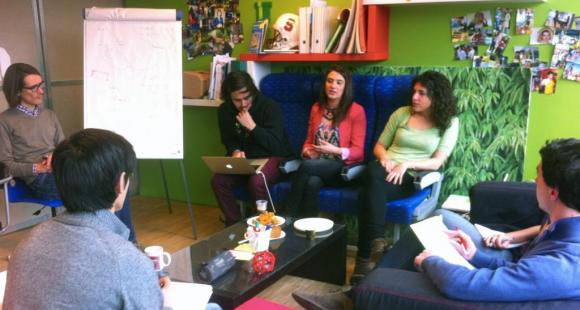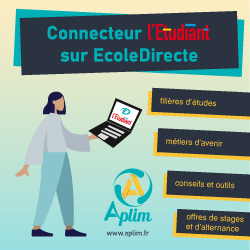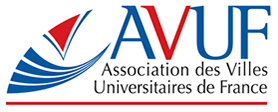
A Trendsetter Turns Ten
An interdisciplinary approach lies at the heart of the ten-year-old Innovative Product Design program (CPI) started by top French schools ESSEC, École Centrale Paris and Strate. The program fosters a culture of innovation among students in management, engineering and design. Assistant dean Emmanuelle Le Nagard explains, "Students partner with companies to create new, market-ready products, services and processes."
Every year, businesses assign projects to roughly a dozen multidisciplinary teams. At the annual trade show in April, the teams showcase the working prototypes they have developed for prominent French companies like KPMG France, La Poste, Hygena, Sanofi, Thalès and Canal+.
Design thinking also inspired ESSEC dean Jean-Michel Blanquer to put design learning in ESSEC's new educational plan, which was unveiled in February 2014. Students in their last year at ESSEC can now define their own course of study with the help of professors and professionals. The school even welcomes student suggestions for new classes.
Blanquer notes, "We're taking education to the next level. Students define their needs, plan for their future and work with professors to create courses that meet their specific needs." In other words, design thinking is revolutionizing ESSEC.
The First French d.school
Reinventing cooking. Improving hospital waiting rooms. Applying best practices in air travel to train travel. Inventing sustainable bottled water. These are a few of the design thinking projects to come out of the École des Ponts ParisTech since 2007.
In 2009, the school launched the Paris-est d.school together with ESIEE Paris, ENSA VT, EIVP and UPEMLV. According to d.school dean Véronique Hillen, the d.school has "a two-part mission. We teach students disruptive innovation skills and we transform the way our professors teach."
In 2012, the d.school won the IDEFI prize for excellence in innovative education. The prize, which is part of the French government's Investissements d'avenir initiative, awarded the school €4.1 million over the course of eight years.
Like Stanford's ME310 Design Innovation program, which partners with the École des Ponts, the d.school has nine innovation spaces. One of them is the 7s shop. Hillen explains, "it should only take seven seconds to walk from the workshop to the design space. This encourages spontaneous creativity." Certain spaces like the kitchen are dedicated to Slightly Unorganized Design Sessions (SUDs), which foster creativity.
Though the ME310 program is limited to about a dozen students from Paris per year, the d.school also holds design thinking events for its other students. This just goes to show that at the Paris-est d.school, design thinking is king.
The Design Behind Kedge's i-Lab
Kedge Design School recently held a creativity seminar on disabilities and urban mobility for design and management students at its new Toulon campus. The goal? Bring together students from different disciplines to develop projects from concept to prototype in its new, collaborative Innovation Lab, or i-Lab.
According to David Brun, economic development manager at Kedge, "We are equipping the engineers of tomorrow with a broad set of skills. They collaborate with design and management students on real business challenges." The i-Lab is also open to engineering students from Isen Toulon.
Teachers at the i-Lab explain the process, form multidisciplinary groups and impose a deadline. Design School director Hervé Casiglia explains, "The obligation to produce results forces students to adapt their models and start building right away. We make them move fast. They have two weeks to come up with an idea and build a prototype." This pressure pushes students to develop projects quickly, even at the risk of having to start over again. Casiglia says that this "American way of thinking" motivates students to use digital tools, cut to the production phase and go for it. It won't be long before we see the fruits of design thinking at Toulon.






